Preparing pre-K students for kindergarten and keeping them engaged is a huge undertaking. As pre-K teachers, our goal is to build the basic foundations for early reading and math concepts, beginning their social-emotional learning, and working with them on physical abilities such as motor skills. Adding to this challenge is the fact that pre-K teachers also need to attend to students who’ve likely never been in an academic setting and don’t understand the mechanics and expectations of a classroom. Providing a highly-engaging learning experience every day helps us accomplish everything we need to with our pre-K students.
1) Identify students who are (or aren’t) engaged.
When I think about student engagement, the first thing that comes to mind is a child who actively responds, both visibly and audibly, to what’s going on in the classroom—and whose body language is consistent with active involvement in the lesson.
On the contrary, I also think about the very quiet students who are definitely engaged with their learning but demonstrate it in a different way. Some people just have a naturally quiet disposition, of course, but the classroom environment is also pretty scary for our youngest students. It can be very overwhelming and intimidating. They go from being the center of the world in their families to this big classroom with 20+ other kids and two adults whom they don’t know. They’re going to new places and experiencing activities they don’t know how to play, and they’re unsure of how they’re supposed to be communicating in this new environment. All of this lends itself to various ways to express their engagement.
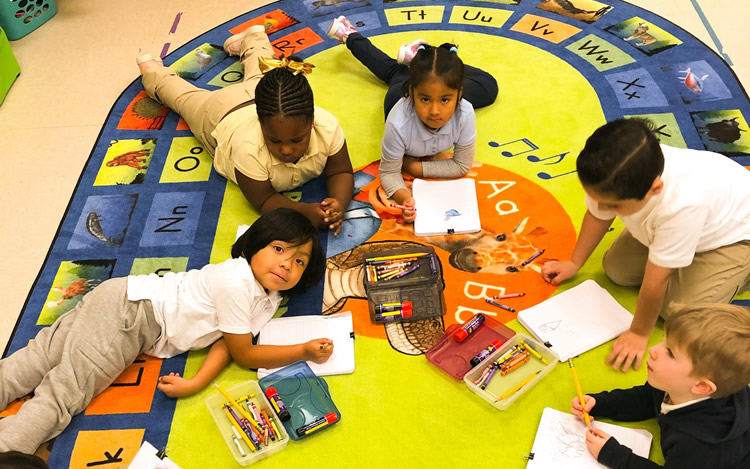 The idea of going from a self-centered environment to feeling like a speck in a big world where I don’t know my place seems intimidating to me as an adult, so I can understand why they’re quiet. I have one little girl in my class now who didn’t really start having conversations with me or most of her classmates until Christmas. Building their confidence is just another element we use to help students develop in order to make sure they’re ready for kindergarten. Fortunately, students tend to develop confidence as they learn both academic and social skills before moving into kindergarten. These are skills such as identifying letters and their sounds, the understanding that letters make words and words make sentences, the ability to count individual objects up to 20, and so on.
The idea of going from a self-centered environment to feeling like a speck in a big world where I don’t know my place seems intimidating to me as an adult, so I can understand why they’re quiet. I have one little girl in my class now who didn’t really start having conversations with me or most of her classmates until Christmas. Building their confidence is just another element we use to help students develop in order to make sure they’re ready for kindergarten. Fortunately, students tend to develop confidence as they learn both academic and social skills before moving into kindergarten. These are skills such as identifying letters and their sounds, the understanding that letters make words and words make sentences, the ability to count individual objects up to 20, and so on.
Engagement (or lack thereof) may be difficult to spot with such young children as they become accustomed to school, but it’s still at the center of a successful pre-K classroom. By providing a variety of fun and exciting learning opportunities, we can be sure we’re reaching even the shyest students.
2) Create an engaging classroom layout.
Activity centers are a great way to provide that variety of experiences. One way I try to make these activities as engaging as possible is by thinking through the layout of my classroom. I set up one side of the room to be louder and more playful, while the other side is quieter and better suited to concentration. On one side of the room we’ll have blocks and a kitchen play area next to math manipulatives. If you keep walking in the same direction, you’ll find art and science areas, then a station for iPad use and writing, and then a library space.
We also spend lots of time practicing transitions and other classroom routines. It takes some time upfront, but it pays off so well once everyone gets into the swing of the school year and the students know exactly how to move around the classroom. It saves me a lot of time picking up manipulatives and other classroom objects, too, because the students know where they go and are well-practiced at putting them away
3) Look for fun classroom tools.
Like any teacher, I’m always on the lookout for fun new tools to add to my classroom. One of my favorites this year is Letters alive. It’s an early literacy program that teaches the foundations of reading by using 26 zoo animals that spring to life in 3D! Students use letter, word family, and sight word cards to build words and sentences while interacting with the animals.
These 3D animals are so exciting for the students, of course, but one of the things I like about the product is that it doesn’t just live in a piece of software.  We use the cards as traditional flashcards, and there are also student journals that can be taken home to work on the same literacy concepts with their parents on mobile devices. The free mobile app turns the journal into a magical 3D animal adventure! A big part of engaging pre-K students and ensuring their growth is parents who are committed and engaged in their children’s education.
We use the cards as traditional flashcards, and there are also student journals that can be taken home to work on the same literacy concepts with their parents on mobile devices. The free mobile app turns the journal into a magical 3D animal adventure! A big part of engaging pre-K students and ensuring their growth is parents who are committed and engaged in their children’s education.
4) Take plenty of breaks.
Children in pre-K are just too young to sit still for long stretches of time and remain mentally engaged. They need breaks, and they definitely need to move. Kids love songs, so I firmly believe that anything with a tune and educational value belongs in a classroom. I can’t sing, though, so I’ll often play songs via YouTube videos and playlists that incorporate our learning objectives. It gives students a little mental break, but it also reinforces the concepts we’re working on as a class. I like to use GoNoodle, a service that combines physical activity in the classroom with educational activities, too. It gets the kids moving while they learn. It’s a great way to get students alert and attentive without sacrificing instructional time. Alive Studios also has an awesome alphabet song for introducing the 26 animals in their zoo. The kids love it!
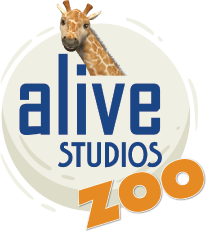
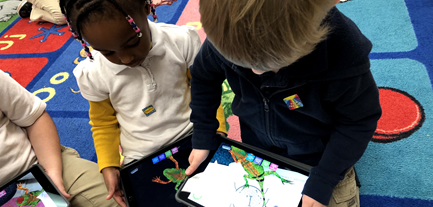
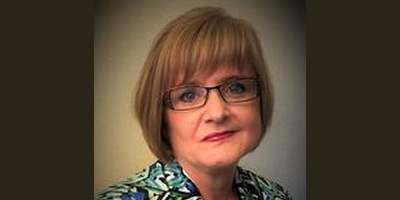







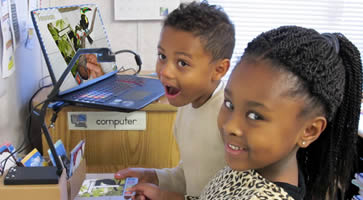
 America has a literacy crisis among our early learners and serious solutions are in demand. “An alarming number of children—about 67 percent nationwide and more than 80 percent of those from low-income families—are not proficient readers by the end of third grade. This has significant and long-term consequences not only for each of those children but for their communities, and for our nation as a whole,” cited Ralph Smith, Managing Director of The Campaign for Grade-Level Reading.
America has a literacy crisis among our early learners and serious solutions are in demand. “An alarming number of children—about 67 percent nationwide and more than 80 percent of those from low-income families—are not proficient readers by the end of third grade. This has significant and long-term consequences not only for each of those children but for their communities, and for our nation as a whole,” cited Ralph Smith, Managing Director of The Campaign for Grade-Level Reading.
 Sure they offer the ability to do “it” quicker, bigger, and with more wow.. but do what? It’s the content ON the device that makes the difference. It’s the software application that brings the device to life and solves problems in classrooms.
Sure they offer the ability to do “it” quicker, bigger, and with more wow.. but do what? It’s the content ON the device that makes the difference. It’s the software application that brings the device to life and solves problems in classrooms.


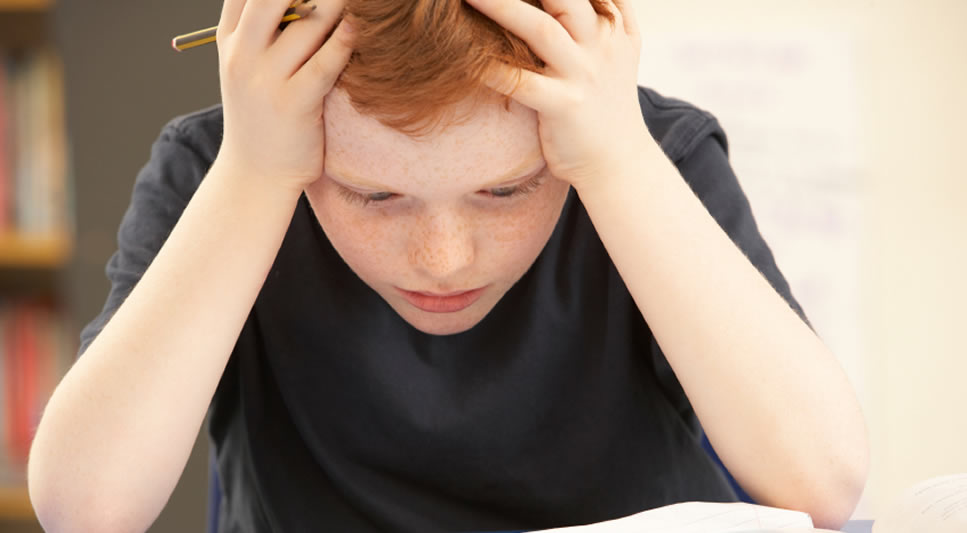
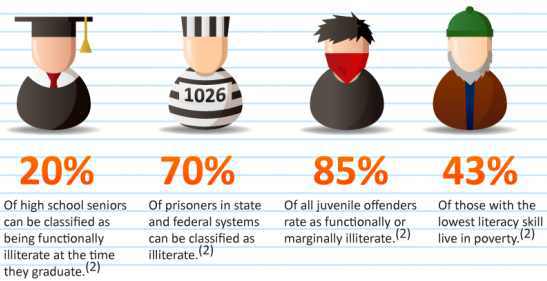
 It’s hard to solve any issue without finding, defining, and exposing the root of the problem. Teachers commonly cite student engagement as a major contributor to not learning and not retaining the presented information. In their personal lives, today’s children are exposed to so many neurological stimulants in an average day that a typical classroom curriculum simply doesn’t hold their attention. Therefore with low engagement, learning is hindered and retention of information is minimal. Studies show that the average attention span is now around eight seconds – and that is for adults.
It’s hard to solve any issue without finding, defining, and exposing the root of the problem. Teachers commonly cite student engagement as a major contributor to not learning and not retaining the presented information. In their personal lives, today’s children are exposed to so many neurological stimulants in an average day that a typical classroom curriculum simply doesn’t hold their attention. Therefore with low engagement, learning is hindered and retention of information is minimal. Studies show that the average attention span is now around eight seconds – and that is for adults.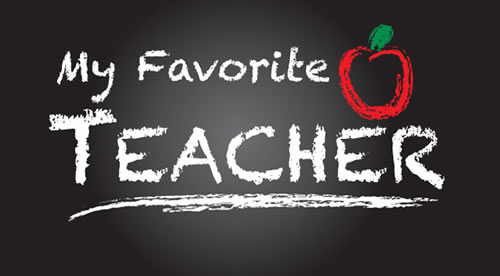
 Now, considering it’s been over twenty years since I’ve had a teacher, it took me a minute to think. But even after chewing on it for a bit, I realized not only did I not have a particularly favorite teacher, I barely had any memorable teachers at all. Thinking through my 17 years of schooling, I could only recall about six teachers by name even though I’ve had well over 50. I remembered them because they were creepy, crazy, or creative… not necessarily because they were favorites.
Now, considering it’s been over twenty years since I’ve had a teacher, it took me a minute to think. But even after chewing on it for a bit, I realized not only did I not have a particularly favorite teacher, I barely had any memorable teachers at all. Thinking through my 17 years of schooling, I could only recall about six teachers by name even though I’ve had well over 50. I remembered them because they were creepy, crazy, or creative… not necessarily because they were favorites. Who was your favorite teacher? Why were they special to you? Think about this and make these next few days/weeks count for each of your students. Leave a beautiful mark. Tell each of them how special they are and that you believe in them. You may be the only person to ever tell them this.
Who was your favorite teacher? Why were they special to you? Think about this and make these next few days/weeks count for each of your students. Leave a beautiful mark. Tell each of them how special they are and that you believe in them. You may be the only person to ever tell them this.
 Early childhood educators attending the National Title 1 Conference in Salt Lake City this week will be treated to a hands-on experience of the latest in 3D augmented reality (AR) curriculum.
Early childhood educators attending the National Title 1 Conference in Salt Lake City this week will be treated to a hands-on experience of the latest in 3D augmented reality (AR) curriculum.